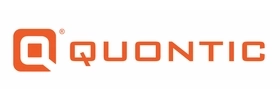- 1.10% APY on your checking balance
- Convenient online banking
- Access to 90,000 fee-free ATMs
- Free pay ring to use as a debit device
Quontic Bank Review 2024: Modern Banking With a Nice Ring to It

Our evaluations and opinions are not influenced by our advertising relationships, but we may earn a commission from our partners’ links. This content is created by TIME Stamped, under TIME’s direction and produced in accordance with TIME’s editorial guidelines and overseen by TIME’s editorial staff. Learn more about it.
Quontic Bank is a digital bank that offers a modern banking experience and flexible mortgage lending for underserved borrowers. It is a U.S. Treasury Community Development Financial Institution (CDFI), a designation met by fewer than 3% of U.S. banks.
Quontic’s mission to “help customers find financial empowerment and help creditworthy borrowers get home loans” is most visible in its various mortgages The bank aims to serve a segment of the population that a lot of other lenders snub. Self-employed professionals, real estate investors, freelancers, non-U.S. citizens, and people in low-income communities can get loans from Quontic based on alternative documentation, a service most other banks cannot provide.
Quontic also stands out for its fee-free checking accounts, competitive interest rates, debit card spending rewards, and a nifty "pay ring" that's free for qualifying account holders.
Quontic Bank appeals to customers who bank exclusively online and primarily spend with debit cards. In-person banking is not available, so people who prefer a local branch presence need to look elsewhere.
The bank also targets nontraditional home buyers. The self-employed, wealthy individuals with non-salaried income, non-U.S. residents, and international investors will find a greater variety of mortgage qualification options with Quontic than most other banks.
Quontic offers three similar checking accounts, each with a unique perk. All checking accounts have a $100 minimum to open an account, modern digital banking services such as mobile check deposit and bill pay, FDIC insurance, and no monthly, overdraft, or foreign transaction fees.
Customers cannot combine the perks of the High Interest Checking and Cash Rewards Checking accounts but can add a pay ring to either account at no charge (more on the ring later). The Wearable Checking account has no unique benefit besides the ring.
The High Interest Checking account allows customers to earn an annual percentage yield (APY) of up to 1.10% on the account balance. To qualify for the higher interest rate, customers must use their debit card to purchase items priced at $10 or more at least 10 times per statement cycle. Failure to spend enough per cycle results in receiving 0.01% APY on the account balance.
Why we do not recommend it: The High Interest Checking account may be suitable for customers who plan to use the debit card as their primary spending card and want to earn interest on their checking balance.
However, customers are better off using the Cash Rewards Checking account to earn spending rewards and transferring excess cash to the High Yield Savings or Money Market account for higher interest earnings.
The Quontic Money Market account offers the same checking services and a higher APY. Consider the Axos Rewards Checking as an alternative high-yield checking account.
The Cash Rewards Checking account offers 1% cash back on eligible debit card purchases, up to a maximum of $50 per statement cycle, which equates to $5,000 in spending. It’s a non-interest-bearing account, and customers can request a free pay ring.
Why we recommend it: Customers who spend close to $5,000 per statement cycle on their debit card can benefit the most from this account. Earning 1% cash back on $5,000 monthly spending could earn customers up to $600 in rewards per year. The High Interest Checking account would need an average daily balance of more than $50,000 during the year to earn the same. Combine the Cash Rewards Checking account with a High Yield Savings or Money Market account to optimize earnings on excess cash.
Quontic launched the Wearable Checking account to raise awareness of the pay ring, a wearable device to pay for items at retail stores. It’s the nation’s first checking account that comes with a free pay ring.
Why we do not recommend it: The Wearable Checking account has no perks other than the pay ring. Customers can get a free pay ring through the High Interest Checking, Cash Rewards Checking, or Money Market account.
Quontic’s High Yield Savings account offers a 4.00% APY on cash and no monthly service fees. Savings interest accrues daily and is paid at the end of each statement period. There is a $100 minimum to open an account and the APY is subject to change at any time.
Why we recommend it: The High Yield Savings account is sufficient for customers who want to transfer money from a checking account to earn a higher yield.
Quontic offers standard CDs with five different terms. The minimum to open a CD is $500, and APYs are mostly in line with the High Yield Savings and Money Market accounts, though all rates are subject to change.
| Term | APY* | Early withdrawal penalty |
|---|---|---|
Quontic 6-Month CD | 4.25% | One year of interests |
Quontic 1 Year CD | 4.00% | One year of interests |
Quontic 2-Year CD | 3.35% | Two years interest |
Quontic 3-Year CD | 3.25% | Two years interest |
Quontic 5-Year CD | 3.00% | Two years interest |
Early withdrawal penalties are high compared to competitor banks. When CDs mature, customers have a 10-day grace period to withdraw the principal or renew the CD with the same term.
Why we do not recommend it: Quontic’s CD rates are not currently high enough to justify the savings constraints of a CD. With the exception of the 6-month CD, the rates offered are lower than the Money Market account and equal to or near the High Yield Savings account.
Moreover, early withdrawal penalties are higher than those of banking peers. If a customer needs early access to money on a 6-, 12-, or 24-month CD, their earnings will be completely wiped out. Use the Money Market or High Yield Savings instead. Construct a CD ladder to lock in rates only if you’re concerned about falling interest rates and sure you won’t need to withdraw funds early.
The Quontic Money Market account pays savers 4.75% on savings as well as offering check writing, a debit card, and a free pay ring for spending. It’s the most powerful banking account at Quontic, qualifying as an all-in-one account for comprehensive banking needs.
Why we recommend it: Quontic’s Money Market account combines the perks of a checking account with an attractive return. Its 4.75% APY is very competitive and you’ll also get a free debit card and check writing privileges to go with it. This makes the account an ideal one-stop solution for most banking needs.
Quontic is a certified Community Development Financial Institutions (CDFI) bank. CDFI-certified lenders can offer mortgage products to underserved customers who may not qualify through traditional underwriting standards. Beneficiaries include the self-employed, seasonal, and gig workers, small business owners, immigrants, and people in low-income neighborhoods.
Quontic offers conventional, Federal Housing Authority (FHA), and Department of Veterans Affairs (VA) mortgage loans to qualified borrowers. The bank is registered to lend in all 50 states and has a multilingual sales team. Quontic pairs mortgage customers with an experienced mortgage specialist to help facilitate the mortgage process.
As a CDFI-certified bank, Quontic can serve customers who may not qualify for conventional loans. Quontic qualifies eligible borrowers by reviewing alternative documentation, such as business income, cash flows, and net assets, instead of W-2s and tax returns.
Its nontraditional mortgage types include:
These loans require just one year of self-employment documentation for underwriting and aren’t just focused on tax returns or W-2s. Little to no income documentation is required and other factors that reveal the applicant's financial profile are considered. In the case of proving income, a profit and loss statement prepared by a certified public accountant (CPA) if you are self-employed or verification of income if you earn a salary is enough information to go by.
Asset utilization loans consider a customer’s holistic financial situation, accounting for stock and bond investments, real estate, and business assets. Customers seeking these loans may be retirees, serial entrepreneurs, trust beneficiaries, or others with substantial assets but unconventional income.
Individual Tax Identification Number (ITIN) loans are for people who are not U.S. citizens or permanent residents and do not have a Social Security number. The bank reviews CPA-prepared profit and loss statements instead of W-2s and tax returns.
Foreign national mortgage loans typically serve non-U.S. citizens who want to invest in U.S. real estate.
Debt Service Coverage Ratio (DSCR) loans are for domestic real estate investors. First-time or experienced investors can qualify by demonstrating that the rental income of a property will be enough to cover the mortgage payment, taxes, insurance, and homeowners association (HOA) fees.
Quontic offers home equity loans, or second mortgages, to borrow against an existing property. These loans are available for traditional and nontraditional mortgages for terms of 15 or 30 years. Quontic does not offer home equity lines of credit (HELOC).
Quontic account holders have access to more than 90,000 fee-free ATMs across the U.S. You won’t be charged to withdraw money from your Quontic debit card at the following ATMs:
Quontic does not charge monthly, overdraft, or foreign transaction fees. However, inactive accounts are subject to a $5 dormant account fee.
Customers may encounter other fees, including:
Quontic is covered by the Federal Deposit Insurance Corporation (FDIC), so your deposits are protected up to $250,000 per account holder. You must go through multi-factor authentication to log into your account, and, when using a smartphone, can activate touch and face ID. Users can also lock their debit card online if it’s lost or stolen.
Eligible account deposits have additional Mastercard® ID Theft Protection to protect against fraud.
U.S.-based customer service representatives are available for banking questions either over the phone or via chat Monday through Friday, 9 a.m. – 6 p.m. ET. The phone number for banking queries is 800-908-6600.
Existing mortgage loan holders can contact customer service representatives at 855 300-7067, Monday through Friday, 8 a.m. – 5 p.m. ET. New loan customer service hours are Monday through Friday, 9 a.m. – 8 p.m. ET.
Quontic Bank is owned by Quontic Bank Holdings Corp, a private company that does not trade publicly. The company does not disclose individual equity holders.
Quontic Bank was founded in 2009 when Steven Schnall and George Lazaridis purchased Golden First Bank, a small and struggling physical bank operating in Long Island, New York. The company rebranded to Quontic and was designated a CDFI bank in 2015. Schnall died in a motorcycle accident in August 2022, and Lazaridis now runs the bank.
Quontic has an A+ rating with the Better Business Bureau and a rating of four stars out of five on Trustpilot.
Quontic Bank operates only in the U.S. and is headquartered in Astoria, Queens, New York. It has no branch locations.
Quontic Bank offers a modern banking experience and fee structure similar to Capital One 360. Capital One 360 has slightly less competitive savings rates but more CD options, plus banking products designed for children and teens. The Quontic Bank pay ring is a unique alternative to a standard debit card, and its checking accounts offer cash back or a competitive interest rate, which are perks not available at Capital One 360.
Capital One is a much larger bank offering credit cards, business banking products, auto loans, commercial lending, and a full range of individual banking products. However, Capital One does not provide mortgages.
Quontic Bank and Ally offer similar online banking services. Ally provides more CD terms and better tools for setting and tracking savings goals. It also offers credit cards, home and auto loans, and a comprehensive investing platform for owning stocks, bonds, and exchange-traded funds (ETFs). Quontic stands out for its checking interest and debit card cash rewards.
Though Ally offers home purchase mortgages and refinancings, it is not a CDFI-certified bank and focuses on conventional lending. Quontic Bank is unique in that it can provide mortgage lending services to people who may not qualify for a loan at Ally.
SoFi is a fintech that offers competitive rates and more comprehensive financial products than Quontic Bank. The SoFi checking account offers 0.50% APY with no debit card activity minimums. Its savings account, meanwhile, pays up to 4.6% APY.
Beyond checking and savings, SoFi provides personal, student, and mortgage loans, a credit card, a suite of insurance products, investing services, and various other benefits, including credit score monitoring and the opportunity to earn rewards.
Quontic is unique compared to SoFi with its pay ring debit device and CDFI credentials, which allow it to provide mortgage services to underserved communities. SoFi provides various conventional mortgages, including jumbo loans and cash-out refinances.
Quontic Bank is a relatively small online-only financial services company that caters to debit card users and nontraditional mortgage borrowers. Potential customers may appreciate the bank's youthfulness with its modern banking platform and distinctive pay ring. However, the pay ring will likely be rolled out to other banks soon, making it a novelty today that may attract first-movers but will not convince most people seeking a new bank.
The type of customer most interested in Quontic Bank is people whose mortgage borrowing needs cannot be served elsewhere. Quontic’s tailored alternative documentation loans can help nontraditional borrowers achieve their financial goals. The bank also provides attractive APYs and the possibility to earn cash back on purchases, although its banking products alone may not be compelling enough to win new customers.
Yes. Customer deposits are secure and insured. Quontic is committed to protecting your money, personal data, and identity with multi-factor authentication and Mastercard® ID Theft Protection to protect against fraud.
Quontic is an online-only bank known for its competitive interest rates and accessible mortgages. The bank is one of a select few in the U.S. to extend credit to normally marginalized borrowers, such as the self-employed and people in low-income areas.
Yes. Quontic Bank is a Federal Deposit Insurance Corporation (FDIC) member.
The information presented here is created by TIME Stamped and overseen by TIME editorial staff. To learn more, see our About Us page.




